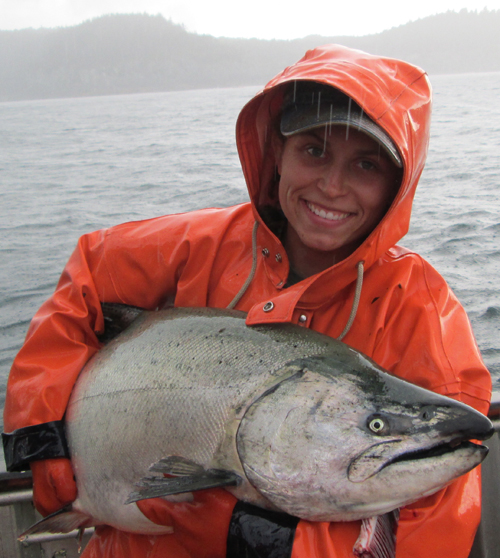Despite a lackluster start to Copper River’s salmon fishery, hopes are still high for a strong salmon season across Alaska.
Copper River fishing started on May 16 with a total run forecasted at 2.3 million sockeye salmon with a common property harvest of 1.9 million. To date, about 565,000 sockeye have been caught—about half of what was caught at this time last year and significantly below the five-year average harvest.
“We’ve had several strong years in a row on the Copper River, so it looks like 2016 might be a change from those years. We’re actually at about half of what we would expect,” Forrest Bowers, division of commercial fisheries operations manager at the Alaska Department of Fish and Game (ADFG), said.
In addition to the low total catch, experts tracking the fishery have also raised concerns regarding the small average weight for sockeye caught early in the season. However, fears seem to be dissipating, as more recent catch data appears more positive.
In Bristol Bay, fishing began on 1 June by regulation and has continued on a weekly schedule that varies by district. Most districts have seen very limited fishing and initial harvest indicated that sockeye were undersized. However, more recent catches have brought in larger fish. About 77,000 fish have been taken to date of a forecasted harvest of 29.5 million.
Fishing in Area M, off the Alaska peninsula, is also looking promising early on in the season. That’s considered a positive sign, as fishing there can be indicative of conditions to come in Bristol Bay, as salmon passing through the False Pass area often return to Bristol Bay.
“They’ve been doing well and it sounds like their fish size is pretty good, around five pounds,” said Katie Sechrist, South Central and Arctic-Yukon-Kuskokwim area information officer at ADFG.
Another positive note is that king salmon returns have been poor since 2010, but are looking strong this year in central Alaska and south-central Cook Inlet. Bowers said returns have been particularly good in the Kenai River.
“We’re actually allowing retention on the early run king salmon, which is the first that has happened in probably six or seven years,” Bowers said.
The Kuskokwim River has also seen good returns and subsistence fishing is being allowed, another first in several years.
In other areas, it is simply too early to say what the season will hold.
At 657,000 chum and sockeye, harvest to date in Prince William Sound is about half of the five-year average harvest. However, the area is still at least several weeks from the typical peak of the season. The expected common property harvest is 2.7 million pink salmon, up from last year’s forecast of 1.54 million pink salmon. Pink salmon harvest in Prince William Sound to date has been negligible.
Fishing in southeast Alaska has been similar to that in Prince William Sound; small amounts of fish have been caught across the area, but substantial data are not yet available to make a more accurate assessment of the season. Informal talk amongst fisherman, however, suggests the season will be strong because an unusual pool of warm water off the West Coast of the U.S. and Canada, known as the “Pacific blob,” has dispersed. Many fishermen believe that the blob “blocked” fish from returning to southeast Alaska in 2015.
With El Niño helping to cool the Pacific, fishing, they believe, may improve. Yet as captain Jeff Golden noted, it is too soon to tell with certainty.
“The season is in such infancy that it’s hard to say what’s going on,” he said.






